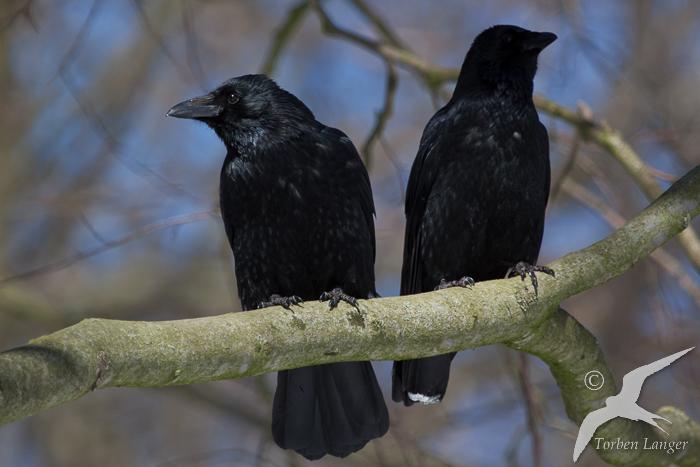Corvid Vocalizations
Biology 342 Fall 2015
Nathaniel Klein and Sophia McKean
Ontogeny
The ontogeny of a behavior is how it develops over an individualís lifetime. When scientists study questions of ontogeny, they study changes among individuals as a result of environmental influences. This means studying what animals have learned from their environment or other ways in which differences in the environment leads to variability between individuals' behavior. It has been shown that there are instances in which the experiences of corvids influence their calling behaviors, and understanding these can shed light on why corvids call the ways they do. Though all corvids have the same basic mechanisms enabling them to vocalize, the plasticity of certain aspects of vocalization enables corvids to better adapt to their environment. Corvids' abilities to modify their songs based on other corvids and to learn to distinguish between other corvids songs is an essential aspect of how highly social they are.

A pair of carrion crows, photo courtesy of Torben Langer
The vocalization of most corvids are determined by their identity, environment, and who they have interacted with. Corvidsí calls are learned, so their repertoires of songs are influenced by their parents, neighbors, and mates. Certain songs are learned primarily from conspecifics of the same sex, or among passed among one sex and only from that sex to the other through the communication of mating pairs. Differential cultural transmission between and among sexes causes there to be sexually dimorphic calling (Enggist-Deublin et al 2001). This likely helps corvids determine the sex of other individuals, and find potential mates. They are able to differentiate between the calls of other individuals (Mates et al. 2015), allowing them to identify and make judgements about them. For example, carrion crows (Corvus corone corone) are able to determine whether an individualís calls are the correct response to a stimulus, and from that determine that individual's reliability (Wascher et al. 2015). This ability to learn alter their behavior based on their auditory and visual environments allows them to be very successful vocally social animals.